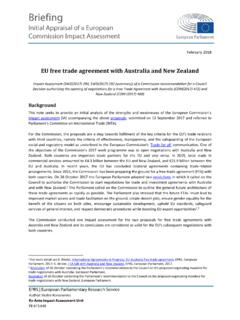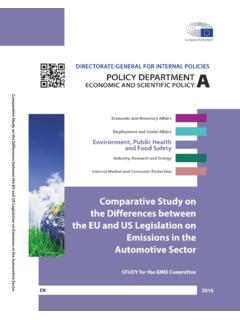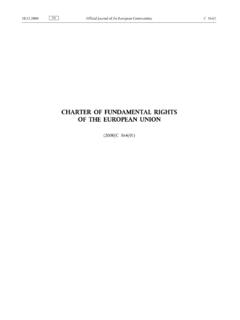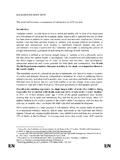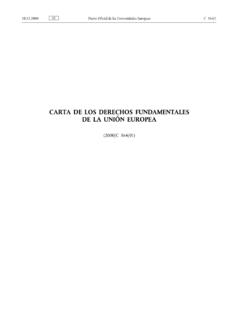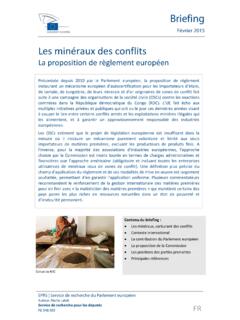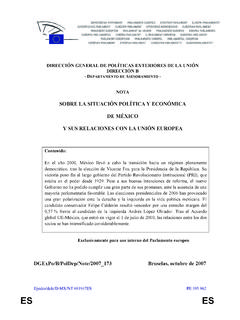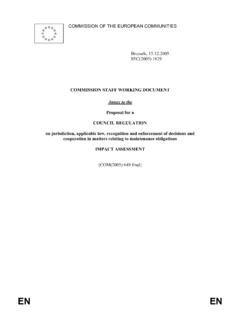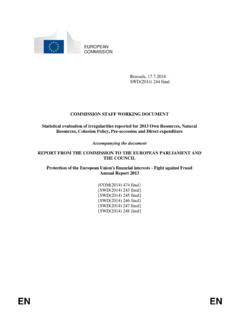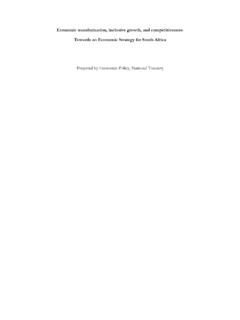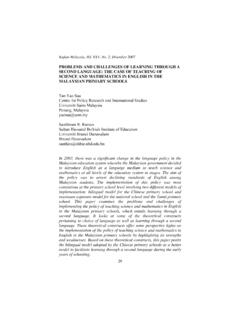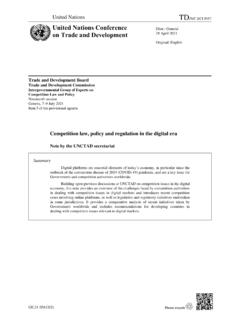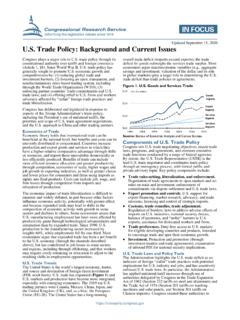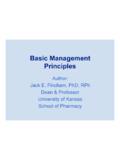Transcription of Seven economic challenges for Russia
1 IN-DEPTH ANALYSIS EPRS | European Parliamentary Research Service Author: Martin Russell Members' Research Service PE July 2018 EN Seven economic challenges for Russia Breaking out of stagnation? This publication describes the current condition of the Russian economy, which has suffered recently from external shocks, such asa collapse in oil prices and Western sanctions. However, it argues that poor economic performance has more to do with long-term internal problems, including a lack of competitive markets, low levels of investment, an absence of innovation and excessive dependence on natural resources.
2 Finally, it discusses President Putin's promises of economic reforms to tackle such issues, and evaluates the probability of major change. AUTHOR Martin Russell, External Policies Unit, Members' Research Service This paper has been drawn up by the Members' Research Service, within the Directorate-General for Parliamentary Research Services (EPRS) of the Secretariat of the European Parliament. To contact the authors, please email: LINGUISTIC VERSIONS Original: EN Translations: DE, FR Manuscript completed in July 2018. DISCLAIMER AND COPYRIGHT This document is prepared for, and addressed to, the Members and staff of the European Parliament as background material to assist them in their parliamentary work.
3 The content of the document is the sole responsibility of its author(s) and any opinions expressed herein should not be taken to represent an official position of the Parliament. Reproduction and translation for non-commercial purposes are authorised, provided the source is acknowledged and the European Parliament is given prior notice and sent a copy. Brussels European Union, 2018. Photo credits: logoboom / Fotolia. PE ISBN: 978-92-846-3653-2 CAT: QA-02-18-947-EN-N (intranet) (internet) (blog) Seven economic challenges for Russia I Executive summary In 2015, a sharp drop in the price of oil, Russia 's main export earner, combined with Western sanctions over Ukraine, pushed the country's economy into recession.
4 Sanctions are still in force, but the oil price has partly recovered, helping economic growth to resume after nearly two years of decline. However, economic recovery has been anaemic, with growth likely to remain below 2 % for the next few years. Forecasts suggest that Russia 's share of the global economy will continue to shrink, and that it will lag ever further behind the world's more advanced economies. External factors such as sanctions certainly weigh on Russia 's economy, but the main barriers to growth come from inside the country and are the result of long-standing problems, many originating in the Soviet period or even further back.
5 Despite market-economy reforms in the early 1990s, Russia remains dominated by large and inefficient state-controlled enterprises. Reforms have improved the regulatory environment and cut red tape, but these gains have not been matched by progress in tackling corruption, which remains a major scourge for business. In terms of human capital, a catastrophic shrinkage in the size of the workforce caused by low birthrates is expected to hold back economic growth. Inequality remains high, and economic recovery has not yet benefited the nearly 20 million Russians living in poverty. A low level of competitiveness correlates with a general lack of innovation, low levels of investment and reliance on natural-resource exports.
6 President Vladimir Putin has made reinvigorating the economy his top priority. For him, stagnation is an existential threat to the country's future. It is of course encouraging that Russia 's leaders recognise the importance of structural reforms. However, the ambitious economic targets set by Putin completely lack credibility, and a poor track record of implementing reforms to encourage economic growth in recent years makes it doubtful that Russia is about to turn the economic corner. Russia 's economic policy has important implications for its relations with the European Union, not only because Russia is the EU's fourth-largest trading partner.
7 Western sanctions imposed on Russia for its aggression in Ukraine exacerbate the structural problems mentioned above; if Russia wants to improve its economic performance, getting sanctions lifted is an important part of the way forward. On the other hand, continued stagnation may encourage Vladimir Putin to compensate for his country's economic weakness through continued confronation with the West. EPRS | European Parliamentary Research Service II Table of contents 1. State of the Russian economy _____ 1 Snapshot of the Russian economy in 2018 _____ 1 economic recovery masks structural problems in the economy _____ 2 Russia 's structural economic problems reflect its history _____ 2 2.
8 Structural barriers to economic growth in Russia _____ 3 competition _____ 3 Governance _____ 6 Human capital _____ 8 Poverty _____ 11 Innovation _____ 12 Investment _____ 15 Natural resources _____ 17 3. Prospects for reform during Putin's fourth presidency _____ 19 Vladimir Putin makes economic reform the top priority_____ 19 Competing options for economic reforms are on the table _____ 20 Some conditions for reforms are favourable _____ 21 A poor track record casts doubt on the success of economic reforms _____ 22 Geopolitical tensions will continue to hold back the economy _____ 22 The new government line-up suggests there will be few changes _____ 23 Political will to carry out difficult reforms may be lacking _____ 23 Seven economic challenges for Russia 1 1.
9 State of the Russian economy Snapshot of the Russian economy in 2018 Figure 1: economic growth in Russia , 1996-2017, % annual growth Year-on-year growth compared to previous 12-month period. Data: Federal State Statistics Service. In 2014, hit with the combined impact of a nearly 75 % drop in the price of oil ( Russia 's main export) and Western sanctions imposed in mid-2014 after Russian aggression in Ukraine, the economy went into recession. The rouble collapsed, inflation soared, and the government was forced to dig deep into its international reserves to keep the banking sector Partly helped by a recovery in the oil price (in April 2018, around US$70 per barrel, up from its January 2016 nadir of under US$30, but still less than its June 2014 peak of US$110), Russia 's economy started growing again in late 2016.
10 In 2017, growth reached %, and is forecast to remain at a similar level for the next two Agriculture was the fastest-growing sector ( %), but manufacturing and services sectors also picked up. Foreign trade grew by 21% and inflation (which went into double digits in 2015 and 2016) fell below 4 %. In 2018 the federal budget came back into surplus. Eighteen months into economic recovery, ordinary Russians have finally started to feel the benefits of growth. The year 2017 saw a small drop in the poverty rate, and in April 2018 real disposable income (the amount of household income left after essential purchases have been paid for) registered its first improvement after four consecutive years of Figure 2: Key economic indicators 2015-2017 GDP growth Inflation Federal budget deficit % of population living below national poverty line In 2017, the economy improved: growth resumed, inflation came down, the budget deficit shrank, and the poverty rate showed signs of starting to fall Sources.
